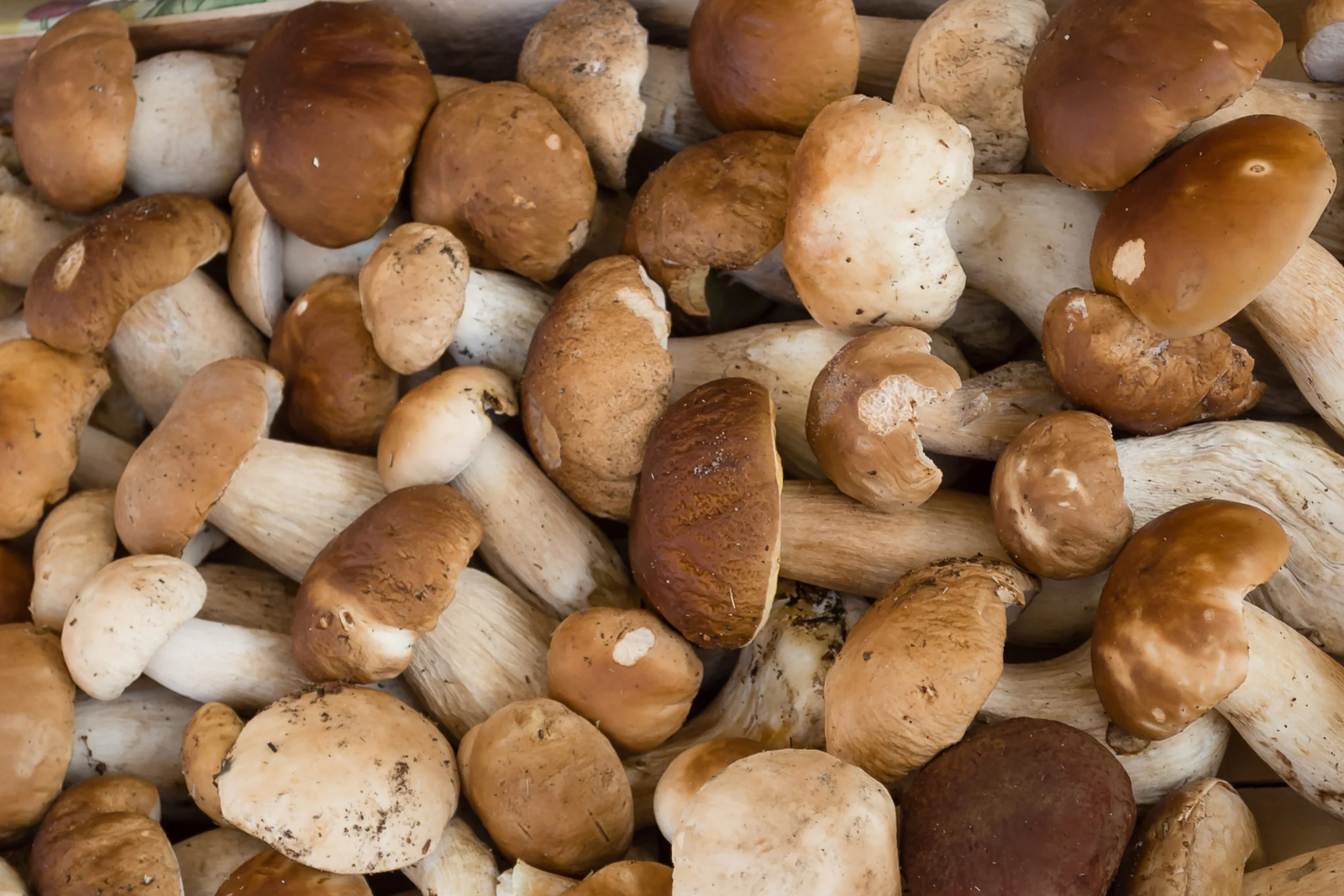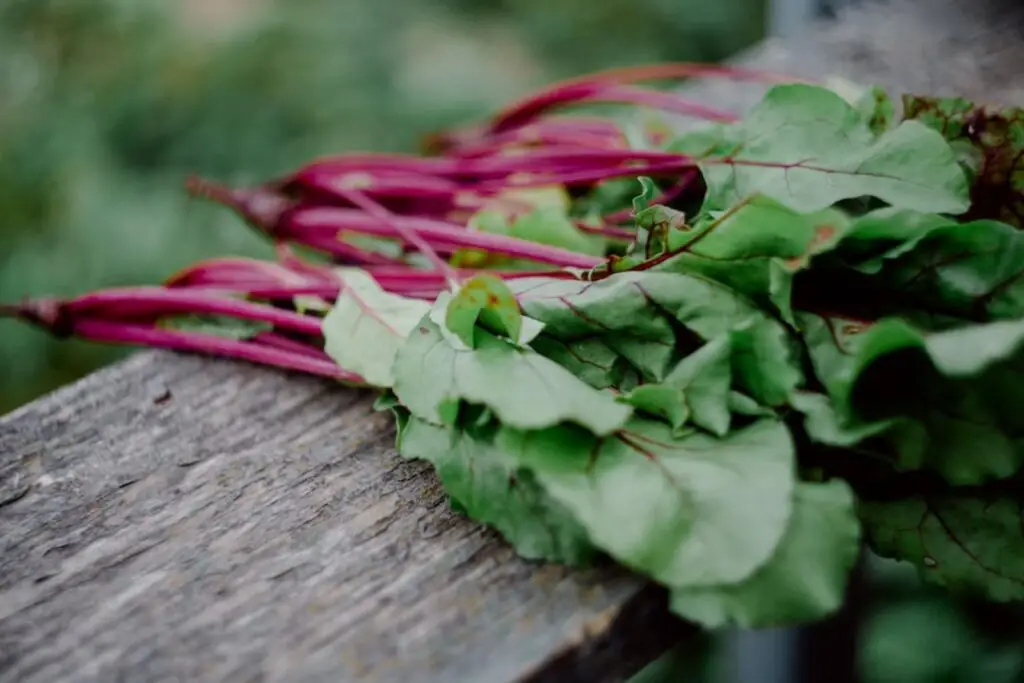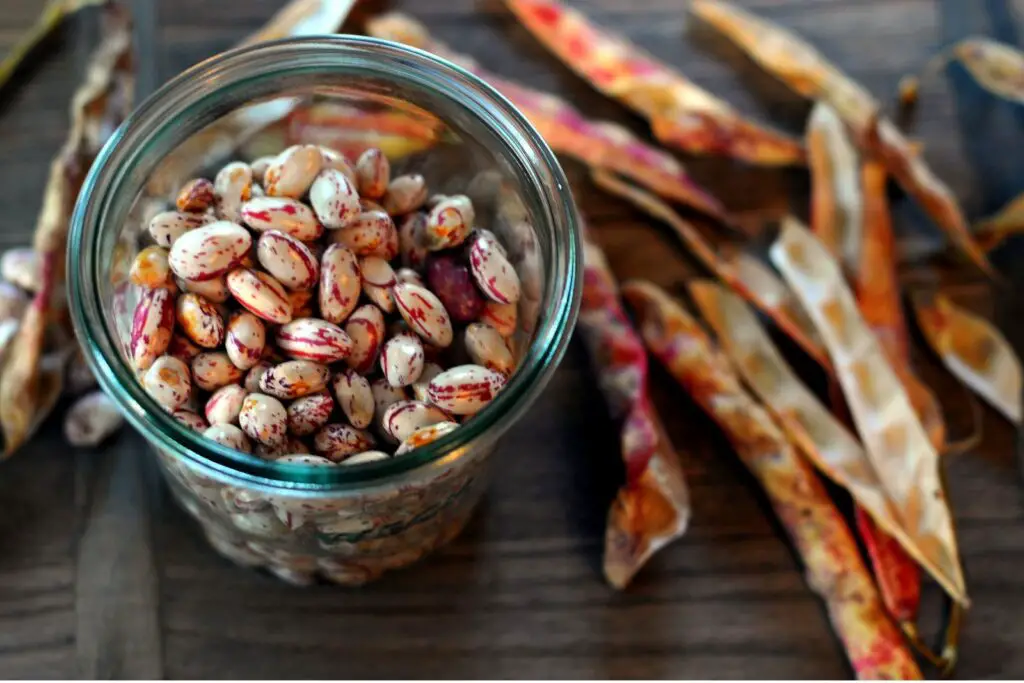
Porcini mushrooms, also known as cep or boletus mushrooms, are highly prized for their rich flavor and meaty texture. These mushrooms are commonly used in various culinary dishes, adding a distinct earthy taste. If you have a bountiful harvest of porcini mushrooms or want to take advantage of a sale at the market, freezing them is an excellent way to preserve their freshness and extend their shelf life. By following a few simple steps, you can freeze porcini mushrooms properly and ensure they maintain their quality for future use. This article provides a comprehensive guide on how to freeze porcini mushrooms, allowing you to enjoy their delightful taste even when they are out of season.
Here’s a step-by-step guide on freezing porcini mushrooms:
- Step 1: Select fresh porcini mushrooms
- Step 2: Clean and trim the mushrooms
- Step 3: Slice or leave whole
- Step 4: Blanch the mushrooms
- Step 5: Drain and dry the mushrooms
- Step 6: Arrange and flash-freeze the mushrooms
- Step 7: Package and seal the mushrooms
- Step 8: Label and date the packages
- Step 9: Store in the freezer
Step 1: Select fresh porcini mushrooms
When selecting porcini mushrooms for freezing, it’s important to choose specimens that are fresh and in prime condition. This ensures that the frozen mushrooms retain their quality and taste when you later use them in recipes.
Fresh porcini mushrooms should have a firm texture and a clean appearance. Avoid mushrooms that are soft, mushy, or show signs of decay such as dark spots or mold. Bruised or damaged mushrooms should also be avoided, as they can affect the overall quality of the frozen product.
Opting for porcini mushrooms at their peak of ripeness is essential for obtaining the best flavor. As mushrooms mature, they develop a stronger, more intense taste. By selecting mushrooms that are fully ripened, you’ll capture that robust flavor in your frozen porcini mushrooms.
Additionally, fresh porcini mushrooms have a distinct aroma that is earthy and slightly nutty. A fresh and pleasant smell indicates that the mushrooms are in good condition and haven’t started to spoil.
Step 2: Clean and trim the mushrooms
Cleaning and trimming porcini mushrooms is an essential step before freezing them. Properly cleaning the mushrooms ensures that any dirt, debris, or impurities are removed, while trimming helps remove any parts that may affect the texture or flavor of the frozen mushrooms.
To clean porcini mushrooms, start by gently brushing off any visible dirt or debris using a soft-bristled brush or a damp cloth. This helps remove any loose particles without damaging the mushrooms’ delicate surface. Avoid washing them under running water, as mushrooms are porous and can absorb excess moisture, which may affect their texture.
Next, examine the mushrooms for any damaged or discolored areas. Trim off the tough ends of the stems using a sharp knife, as these parts can be woody and less desirable for consumption. Additionally, remove any portions of the mushrooms that appear bruised, slimy, or otherwise compromised. These damaged areas can negatively impact the flavor and texture of the frozen mushrooms.
Trimming the mushrooms also allows for more uniform freezing and easier portioning when you later use them in recipes. By removing any unwanted parts, you ensure that only the best parts of the porcini mushrooms are preserved and enjoyed.
Step 3: Slice or leave whole
When preparing porcini mushrooms for freezing, you have the option to either freeze them whole or slice them before freezing. The choice between these two methods depends on personal preference and how you plan to use the mushrooms in the future.
Slicing the porcini mushrooms before freezing offers several advantages. Firstly, sliced mushrooms are more convenient when it comes to portioning them out for specific recipes. By pre-slicing the mushrooms, you can easily measure and use the desired amount without the need to thaw and cut them later. This can be particularly useful when you want to add a precise quantity of mushrooms to soups, sauces, or stir-fries.
Furthermore, sliced porcini mushrooms tend to thaw more quickly than whole mushrooms. This can be beneficial when you’re in a hurry or need to cook a meal with minimal preparation time. Sliced mushrooms also tend to cook more evenly since they have a consistent thickness.
On the other hand, freezing porcini mushrooms whole has its own merits. Keeping the mushrooms intact helps preserve their natural shape and texture. This can be advantageous if you plan to use the mushrooms in dishes where their appearance is important, such as stuffed mushrooms or as a decorative element in a dish.
Freezing porcini mushrooms whole also allows for more flexibility when it comes to later usage. If you’re unsure how you’ll use the mushrooms in the future or prefer the versatility of whole mushrooms, freezing them without slicing is a suitable option.
Step 4: Blanch the mushrooms
Blanching porcini mushrooms before freezing is a crucial step that helps maintain their color, texture, and flavor. This process involves briefly immersing the mushrooms in boiling water and then rapidly cooling them in an ice bath. Here’s why blanching is important:
Preserving color: Blanching helps retain the vibrant color of the porcini mushrooms. It slows down enzyme activity that can cause discoloration and fading over time. By blanching the mushrooms, you ensure that they retain their appealing visual appeal even after freezing and thawing.
Texture maintenance: Blanching helps to partially cook the mushrooms, which alters their texture slightly. This blanching process disrupts the enzymes that can lead to the mushrooms becoming tough or mushy during freezing and storage. It helps to preserve the mushrooms’ firmness and ensures they retain a desirable texture after thawing and cooking.
Flavor retention: Blanching the porcini mushrooms for a short period helps to retain their natural flavors. The process quickly heats the mushrooms, helping to lock in their taste. By blanching before freezing, you enhance the overall flavor experience when you use the mushrooms in future dishes.
The blanching process is relatively simple. Start by bringing a large pot of water to a rolling boil. Once the water is boiling, carefully add the porcini mushrooms and let them cook for 2-3 minutes. It’s essential to maintain a gentle boil during this time.
After blanching, immediately transfer the mushrooms to an ice bath, which is a bowl filled with cold water and ice cubes. The ice bath rapidly cools down the mushrooms and stops the cooking process, preventing them from becoming overcooked or losing their desirable texture.
Can I freeze porcini mushrooms without blanching them first?
Blanching is highly recommended before freezing porcini mushrooms. It helps preserve their color, texture, and flavor, ensuring better results after thawing. Skipping the blanching step may result in a lower-quality end product.
Step 5: Drain and dry the mushrooms
After blanching and cooling the porcini mushrooms, it is important to drain and dry them before proceeding with the freezing process. Here’s why this step is necessary:
- Remove excess moisture: Blanching the mushrooms involves exposing them to water, which can result in excess moisture being retained on their surface. If the mushrooms are frozen with excess moisture, it can lead to the formation of ice crystals, which may affect their texture and quality. By draining and drying the mushrooms, you minimize the presence of excess moisture, ensuring a better freezing outcome.
- Prevent freezer burn: Freezer burn occurs when the surface of frozen food is exposed to air, causing dehydration and the development of off-flavors and textures. By removing excess moisture from the mushrooms before freezing, you reduce the chances of freezer burn and maintain their optimal quality.
- Improved freezing efficiency: Moisture on the surface of the mushrooms can cause them to stick together during freezing. By patting them dry, you prevent them from clumping, making it easier to separate and use individual mushrooms when needed.
To drain and dry the blanched porcini mushrooms, remove them from the ice bath and allow them to drain thoroughly. Gently shake off any excess water to facilitate the draining process. Then, place the mushrooms on a clean surface or a layer of paper towels. Gently pat them dry with additional paper towels to absorb any remaining moisture.
It’s important to handle the mushrooms delicately during this step to avoid damaging their texture or shape. Gentle patting or blotting with paper towels helps remove moisture without applying excessive pressure.
Step 6: Arrange and flash-freeze the mushrooms
Arranging and flash-freezing porcini mushrooms after draining and drying them is an important step in ensuring they freeze individually and remain separate. Here’s why this process is beneficial:
- Prevent clumping: Porcini mushrooms have a tendency to stick together when frozen if they come into contact with each other. By arranging them in a single layer on a baking sheet or tray, with space between each mushroom, you create enough airflow to prevent them from clumping together during freezing. This allows for easier portioning and prevents the need to thaw a larger chunk of frozen mushrooms when you only need a few.
- Flash-freezing: Flash-freezing involves freezing the mushrooms at a very low temperature quickly. By placing the arranged mushrooms on a baking sheet or tray lined with parchment paper and putting them directly into the freezer, you expose them to the cold temperature of the freezer without any delay. Flash-freezing helps to maintain the mushrooms’ texture and prevents the formation of large ice crystals, which can negatively impact their quality.
- Individual freezing: Flash-freezing the mushrooms individually ensures that each mushroom freezes separately. This allows for easier access and portioning when you want to use them in recipes. Individually frozen mushrooms can be easily measured out and added to dishes without the need to thaw the entire batch.
To arrange and flash-freeze the porcini mushrooms, place them in a single layer on a baking sheet or tray lined with parchment paper. Make sure they are not touching each other to maintain separation. Then, place the baking sheet or tray in the freezer and leave the mushrooms undisturbed for a few hours or until they are completely frozen.
Once the mushrooms are fully frozen, they can be transferred to airtight freezer bags or containers for long-term storage. Flash-freezing helps ensure that the mushrooms freeze quickly and maintain their individuality, making them easier to handle and use in recipes later on.
Step 7: Package and seal the mushrooms
Packaging and sealing the frozen porcini mushrooms in airtight containers or freezer bags is essential for preserving their quality and preventing freezer burn. Here’s why this step is important:
- Protection against freezer burn: Freezer burn occurs when frozen food is exposed to air, leading to dehydration and a decline in quality. By transferring the mushrooms to airtight containers or freezer bags, you create a barrier that helps prevent air from coming into contact with the mushrooms. This significantly reduces the risk of freezer burn, ensuring that the mushrooms retain their texture, flavor, and overall quality.
- Minimize moisture loss: Airtight packaging also helps minimize moisture loss from the mushrooms. Even in the frozen state, moisture can slowly evaporate, potentially causing the mushrooms to become dry or shriveled. By sealing them tightly, you help retain their natural moisture content, preserving their texture and taste.
- Prevent cross-contamination: Airtight packaging prevents the transmission of odors and flavors between the porcini mushrooms and other food items in the freezer. This is particularly important if you have strongly scented or flavored ingredients nearby. Keeping the mushrooms sealed in their own container helps maintain their unique characteristics and ensures they don’t absorb unwanted odors or flavors.
To package the frozen porcini mushrooms, transfer them into airtight freezer bags or containers. Ensure that the bags or containers are specifically designed for freezer use and provide a good seal. Squeeze out as much air as possible from the bags before sealing them to create a vacuum-like environment. For containers, ensure that the lids fit tightly and securely.
Step 8: Label and date the packages
Labeling and dating the packages of frozen porcini mushrooms is a crucial step for organization and tracking purposes. Here’s why this step is important:
- Easy identification: By labeling each package with the contents, you can easily identify the frozen porcini mushrooms without having to open every container or bag. This is especially helpful if you have multiple types of frozen ingredients in your freezer. Clear labeling allows you to quickly locate the porcini mushrooms when needed and saves you time and effort.
- Storage management: Date labeling enables you to keep track of the storage time of the frozen porcini mushrooms. It’s important to know how long the mushrooms have been in the freezer to maintain their quality. Over time, frozen food can suffer from flavor deterioration, texture changes, or loss of nutritional value. By knowing the date of freezing, you can prioritize using the oldest packages first and ensure that you consume the mushrooms within a reasonable timeframe.
- Rotation and freshness: Proper labeling allows you to implement a first-in, first-out (FIFO) system for using the frozen mushrooms. By utilizing the oldest packages first, you minimize the chances of the mushrooms sitting in the freezer for too long. This promotes freshness and ensures that you enjoy the best quality porcini mushrooms.
- Inventory management: Keeping track of the contents and dates of freezing helps with inventory management. You can plan meals and shopping lists more effectively by knowing exactly how much and what type of porcini mushrooms you have available. This avoids waste and allows for better meal planning based on the quantity and condition of the frozen mushrooms.
To label the packages, use a marker or a label and clearly write the contents (e.g., “Frozen Porcini Mushrooms”) and the date of freezing. Place the label in a visible area on the package, such as the front or top, for easy identification.
Step 9: Store in the freezer
Storing the labeled packages of porcini mushrooms properly in the freezer is essential for maintaining their quality and preventing flavor contamination. Here’s why this step is important:
- Preserving quality: The freezer is a controlled environment that helps keep food at a stable temperature, preserving its freshness and quality. By storing the porcini mushrooms in the freezer, you can extend their shelf life and ensure they remain in excellent condition until you’re ready to use them.
- Organization and easy access: Placing the labeled packages of porcini mushrooms in an organized manner in the freezer allows for efficient storage management. Stack or arrange the packages in a way that makes it easy to access the desired package without having to move or search through other items. This helps save time and reduces the risk of damaging the packages or other frozen ingredients.
- Preventing flavor transfer: Porcini mushrooms have a distinct flavor that can be easily absorbed by other foods in the freezer. Storing them away from strongly aromatic or flavored foods helps prevent any unwanted flavor transfer. This ensures that the porcini mushrooms maintain their unique taste and are not compromised by absorbing unwanted odors or flavors.
To properly store the labeled packages of porcini mushrooms, place them in a designated area or drawer in the freezer. Make sure the packages are arranged in an organized manner, with the labels facing outward for easy identification. Avoid overcrowding the freezer to allow for proper airflow around the packages.
Additionally, it’s important to store the porcini mushrooms away from foods with strong aromas or flavors. This helps maintain the integrity of their taste and prevents any potential flavor contamination.
How long can I keep frozen porcini mushrooms?
When stored properly in airtight containers or freezer bags, frozen porcini mushrooms can last for about 6 to 12 months. However, it’s best to use them within the first 6 months for optimal flavor and quality.
Other related questions
How do I defrost porcini mushrooms?
To defrost porcini mushrooms, transfer the desired amount of frozen mushrooms from the freezer to the refrigerator. Allow them to thaw slowly in the refrigerator overnight or for approximately 4 to 6 hours. Once fully thawed, use the porcini mushrooms immediately in your desired recipe. Avoid defrosting at room temperature or using a microwave, as these methods can negatively impact the texture and flavor of the mushrooms.
Can I refreeze porcini mushrooms?
It is generally not recommended to refreeze porcini mushrooms once they have been thawed. Freezing and thawing can affect the texture and quality of the mushrooms, and multiple freeze-thaw cycles can further degrade their flavor and texture. To maintain the best quality, it is advisable to use the thawed porcini mushrooms promptly and avoid refreezing them.
How do I know if the porcini mushrooms have gone bad after being frozen?
After being frozen, porcini mushrooms may develop signs of spoilage if they have gone bad. Look for indicators such as a slimy texture, unusual odor, or significant discoloration, such as darkening or browning. If the mushrooms exhibit any of these signs, it is advisable to discard them to avoid the risk of consuming spoiled food. Always use visual and olfactory cues to assess the quality and freshness of frozen porcini mushrooms before incorporating them into your recipes.
What are the best ways to use frozen porcini mushrooms?
Frozen porcini mushrooms can be used in various recipes, including soups, stews, risottos, pasta dishes, and sauces. They add a rich, earthy flavor and meaty texture to dishes. Consider sautéing them with garlic and herbs or adding them directly to cooked dishes during the final stages of cooking.
Can I freeze porcini mushrooms that have been cooked?
Yes, you can freeze cooked porcini mushrooms. Allow them to cool completely before transferring them to freezer-safe containers or bags. Label and date them accordingly. Cooked porcini mushrooms can be frozen for a similar duration as raw ones, but their texture may soften slightly after thawing.
Are frozen porcini mushrooms as good as fresh ones?
While frozen porcini mushrooms can be a convenient option, they may have a slightly different texture compared to fresh ones. However, when properly prepared and stored, frozen porcini mushrooms can still offer a rich flavor and satisfying meaty texture in various culinary applications. They are a great option when fresh porcini mushrooms are not readily available.








